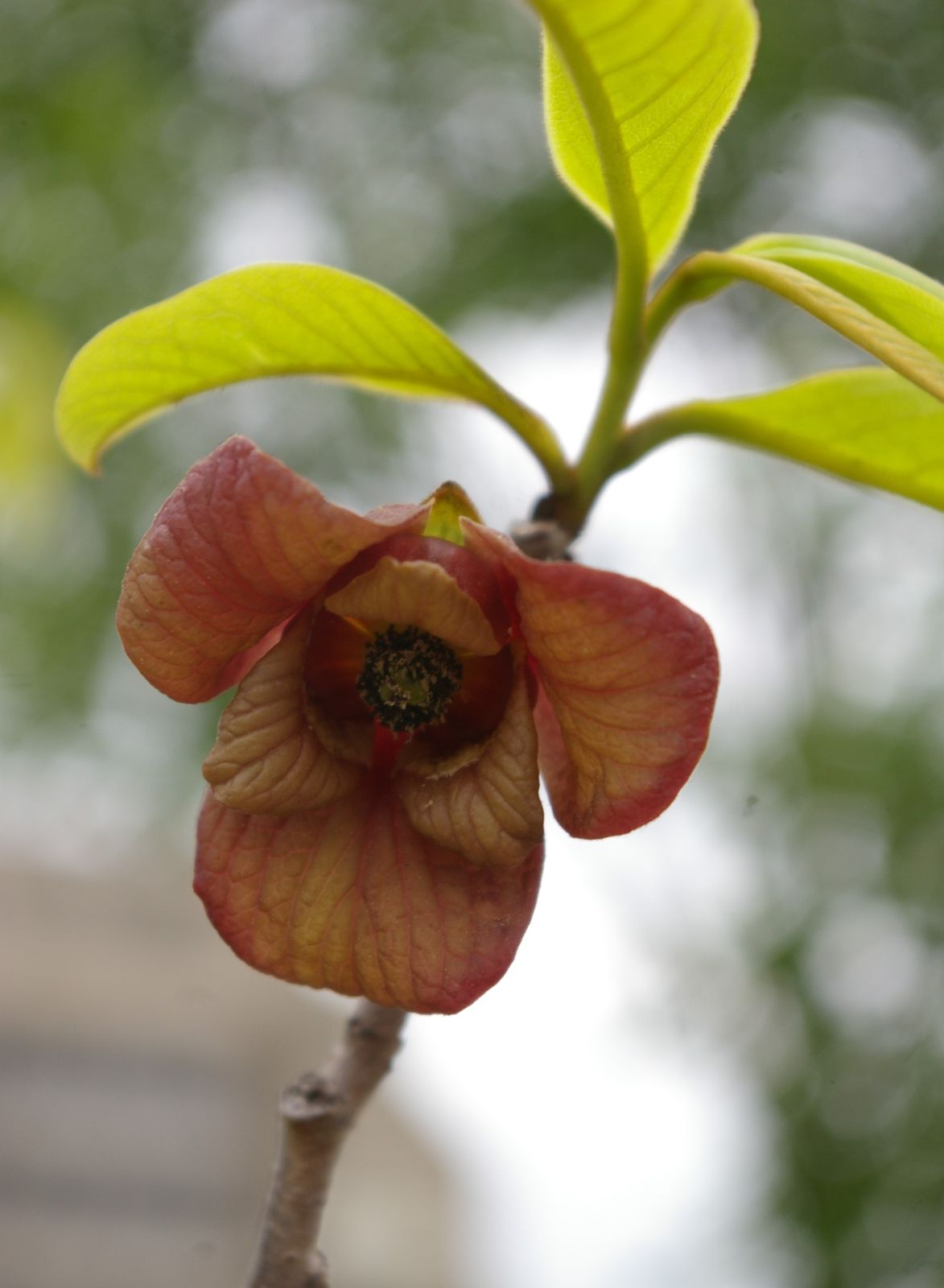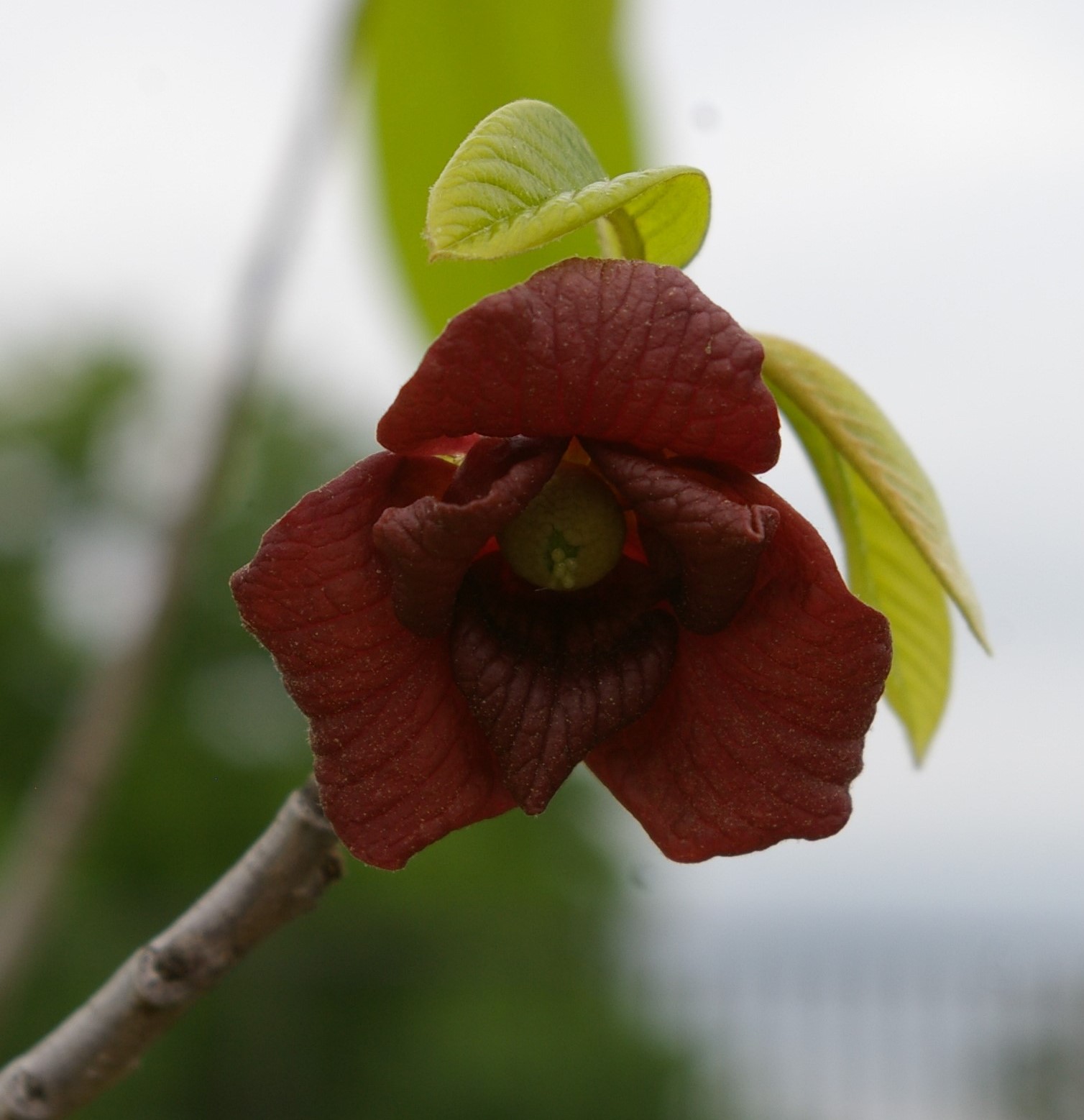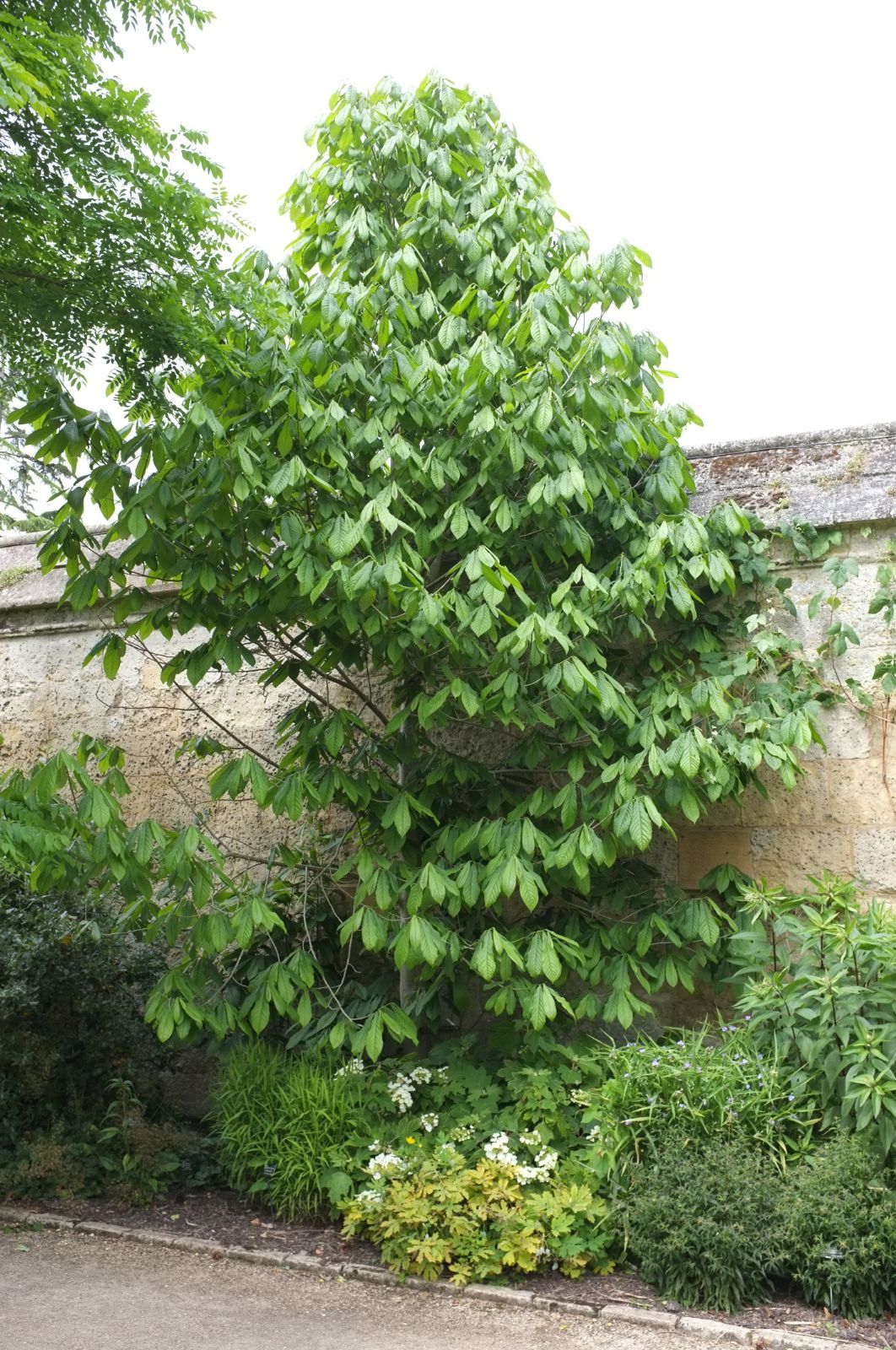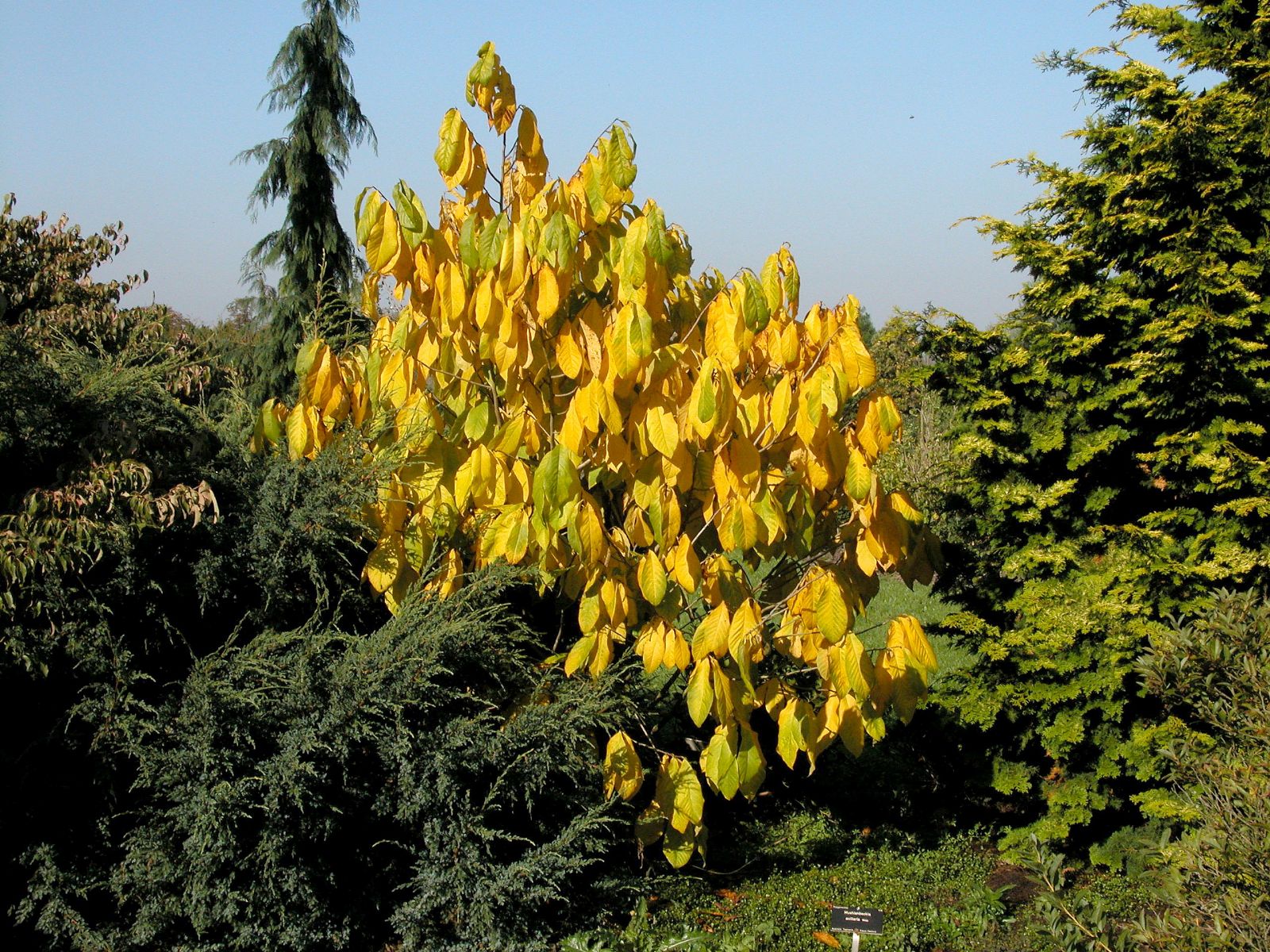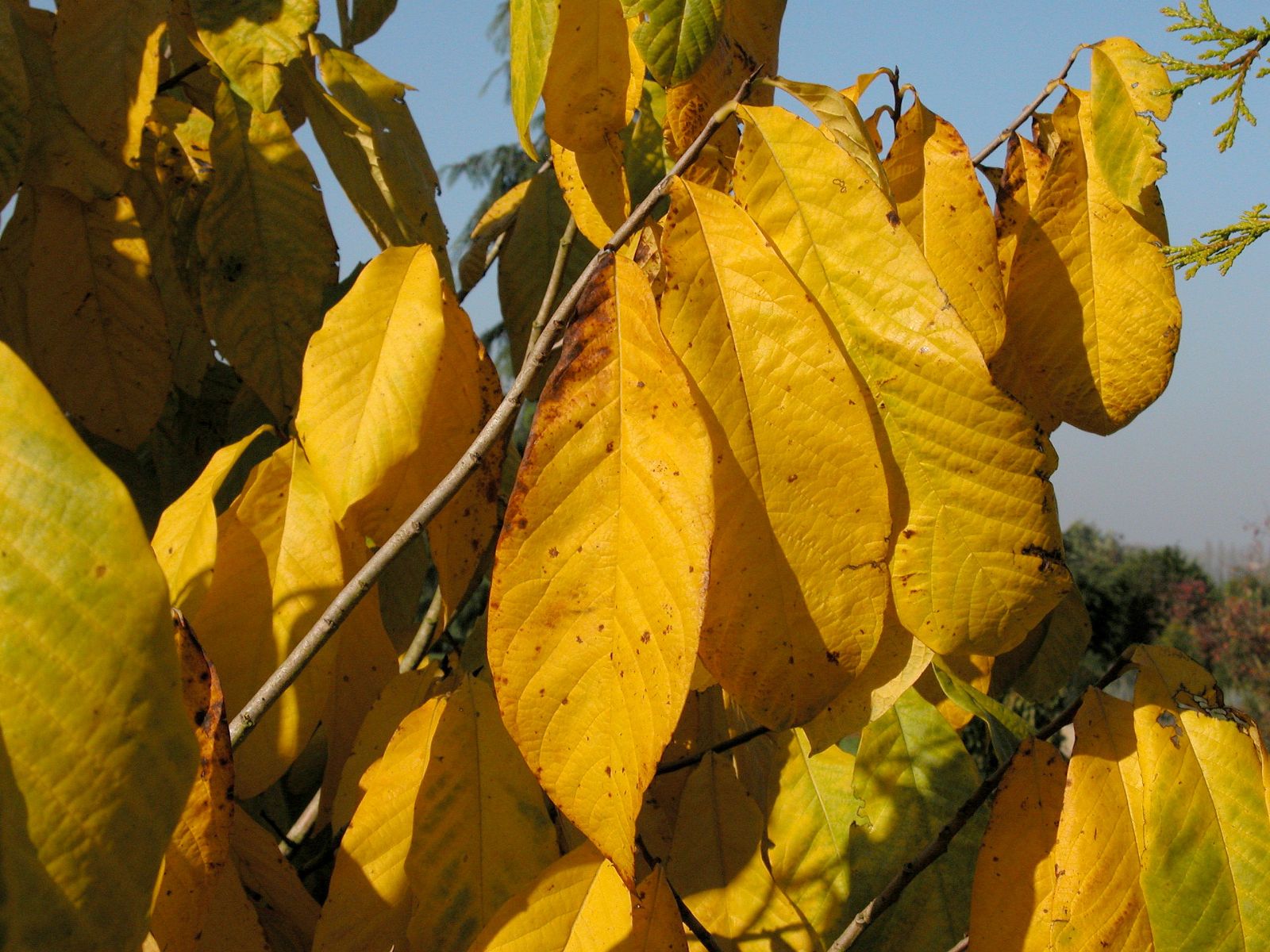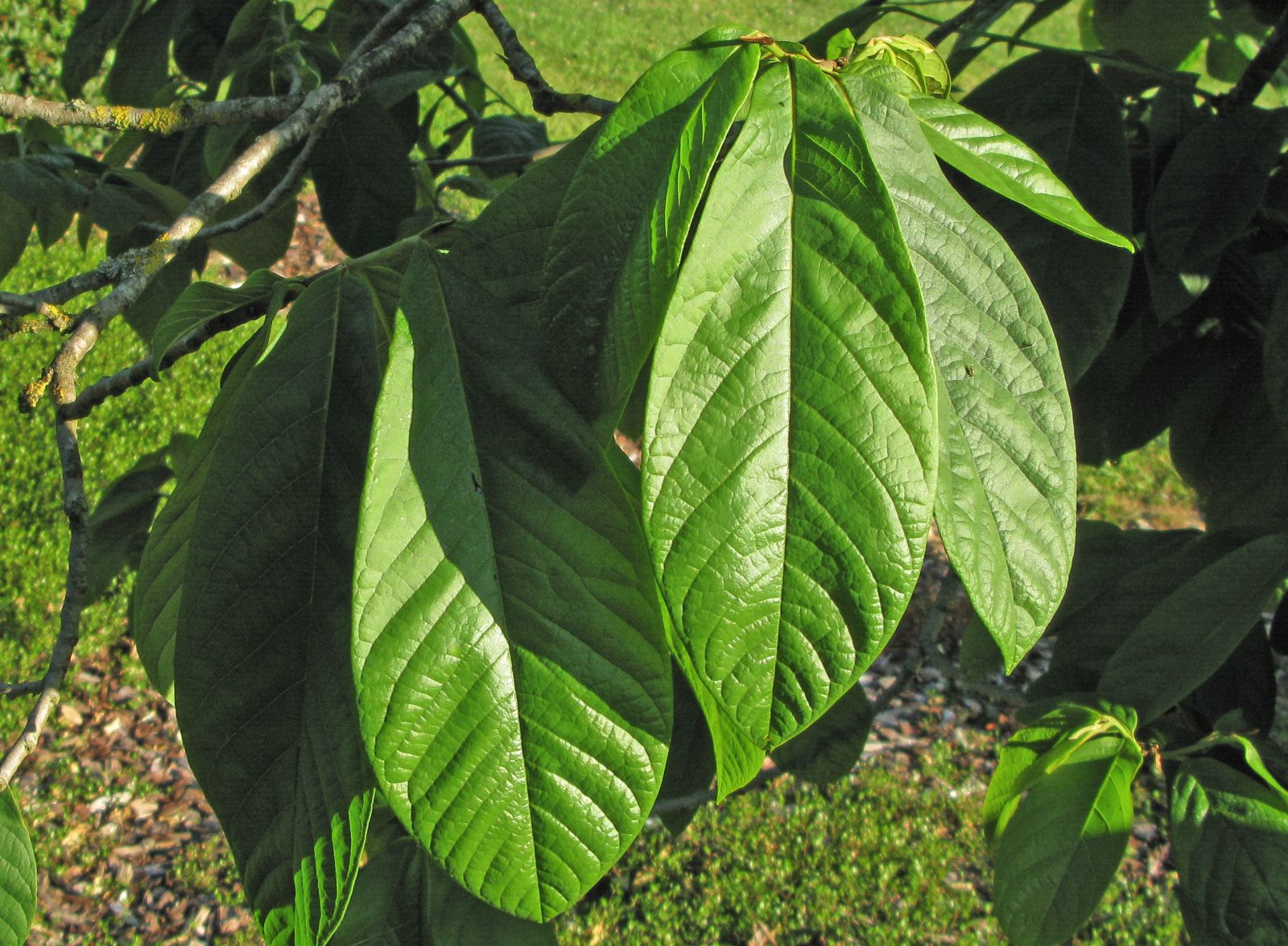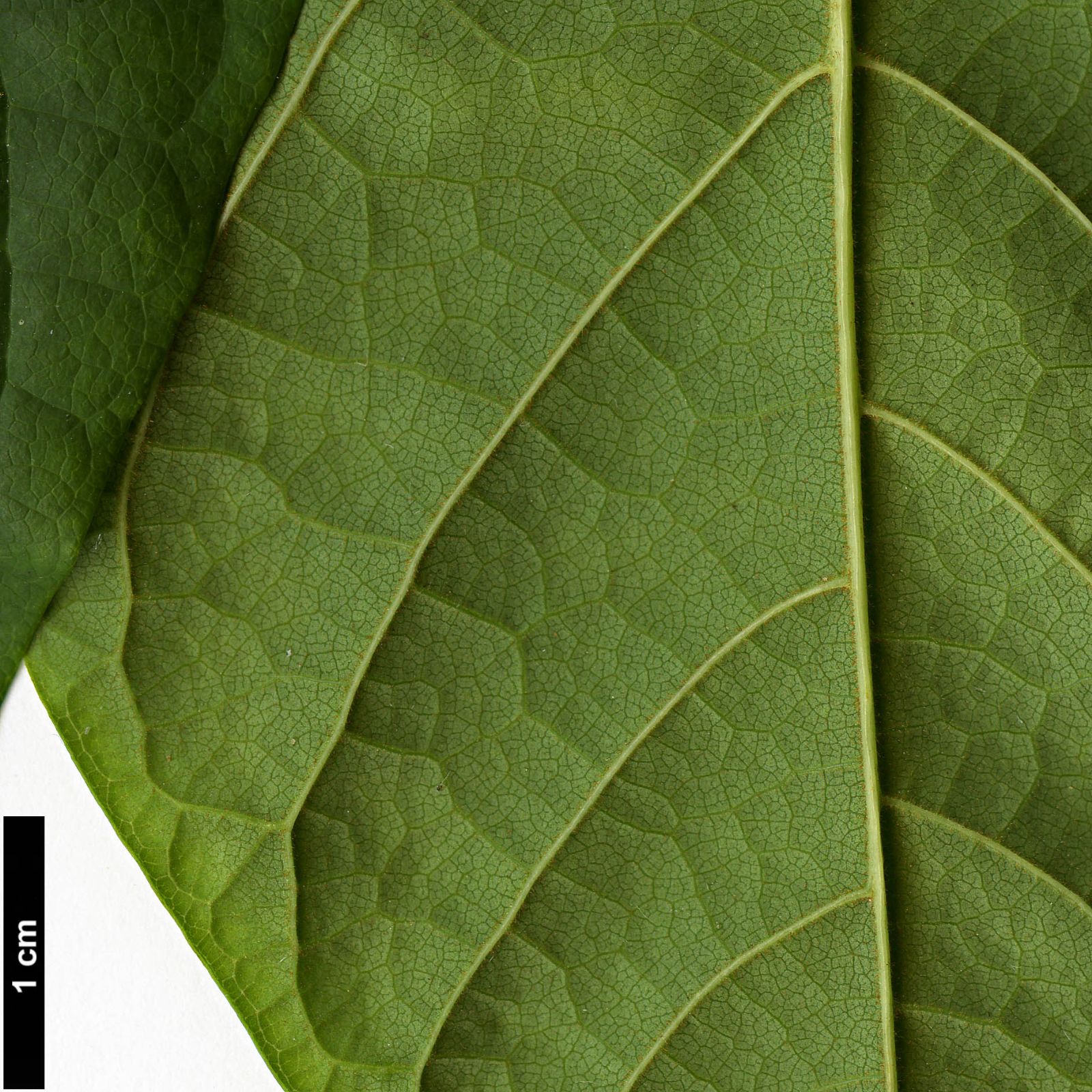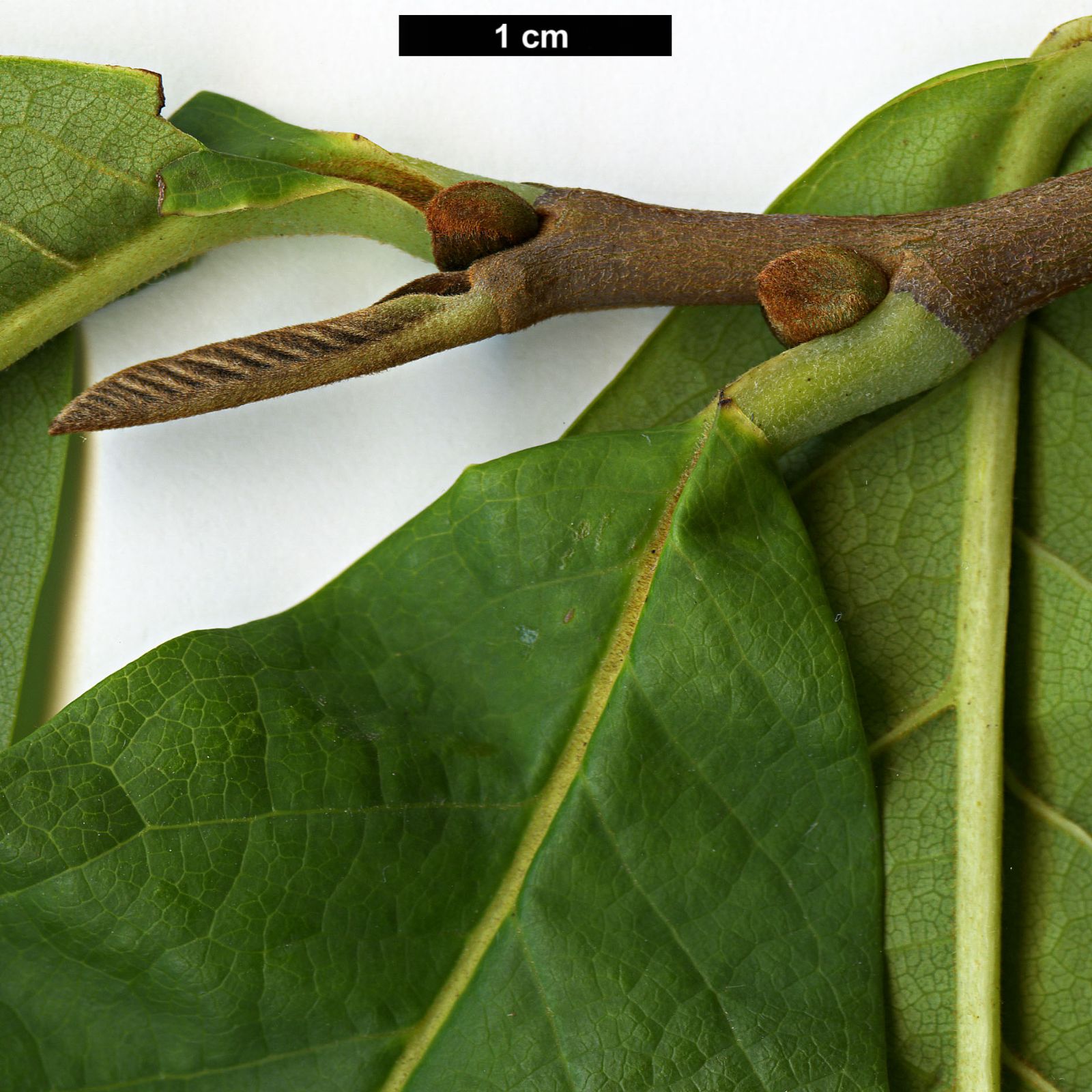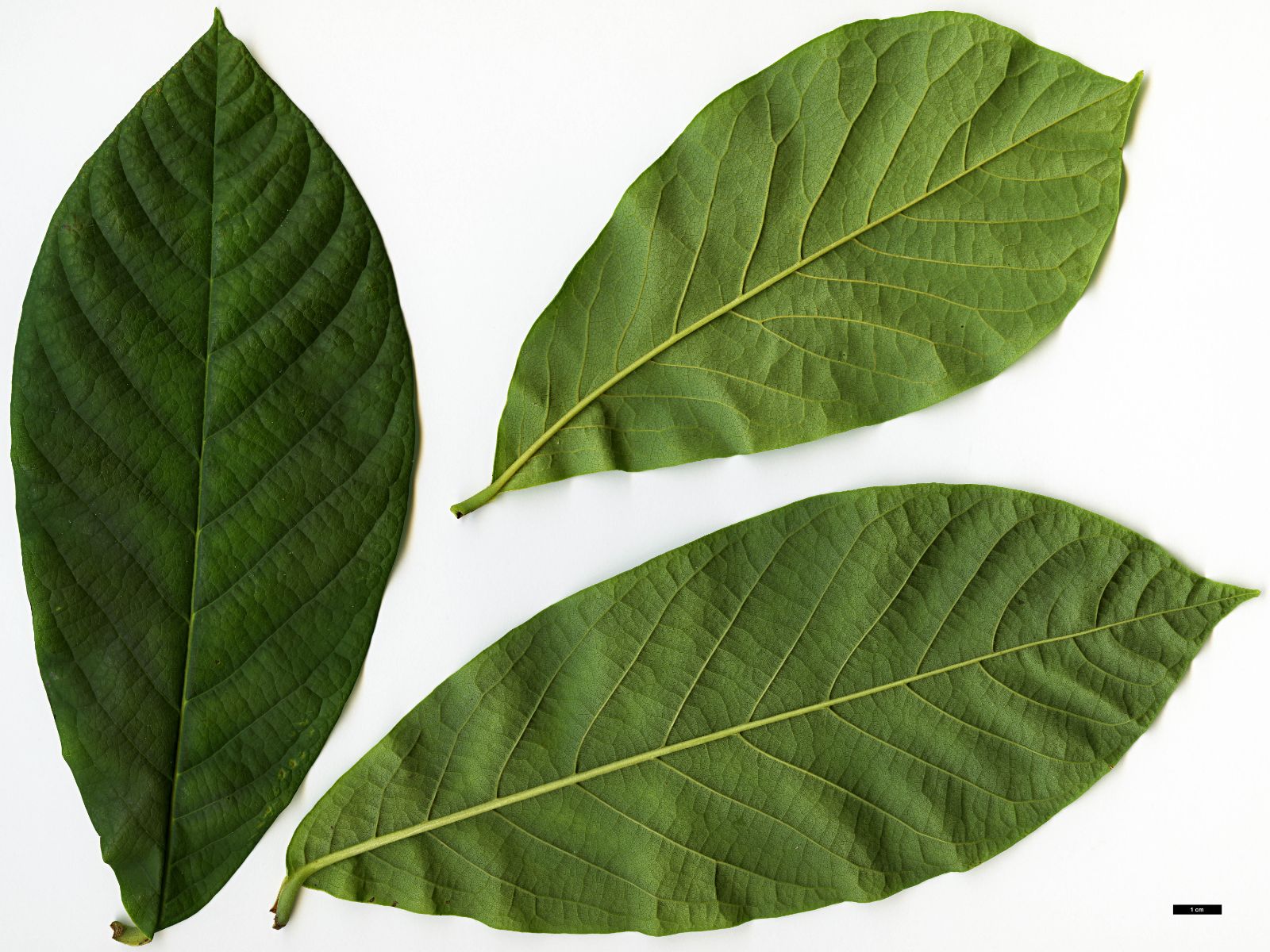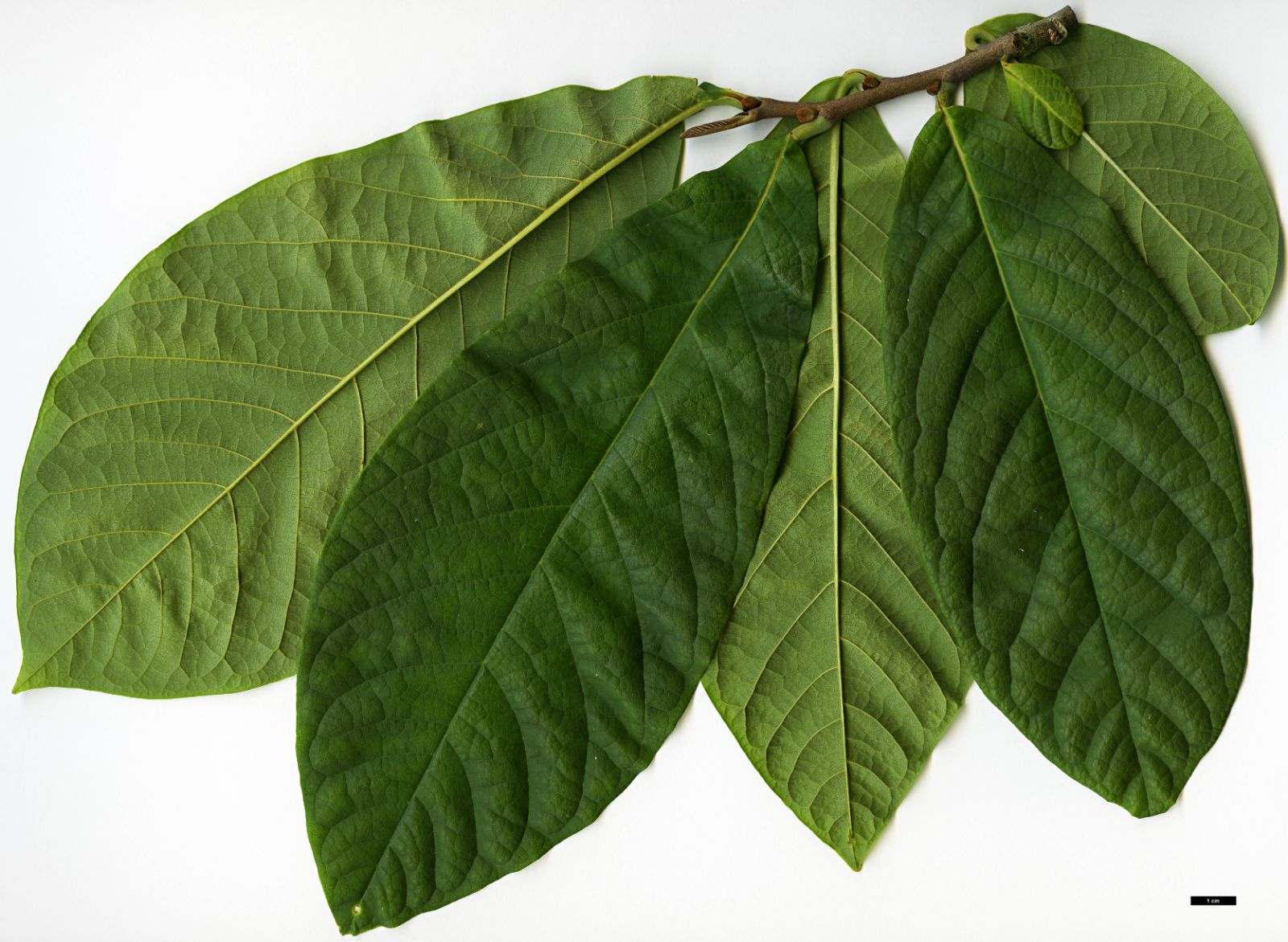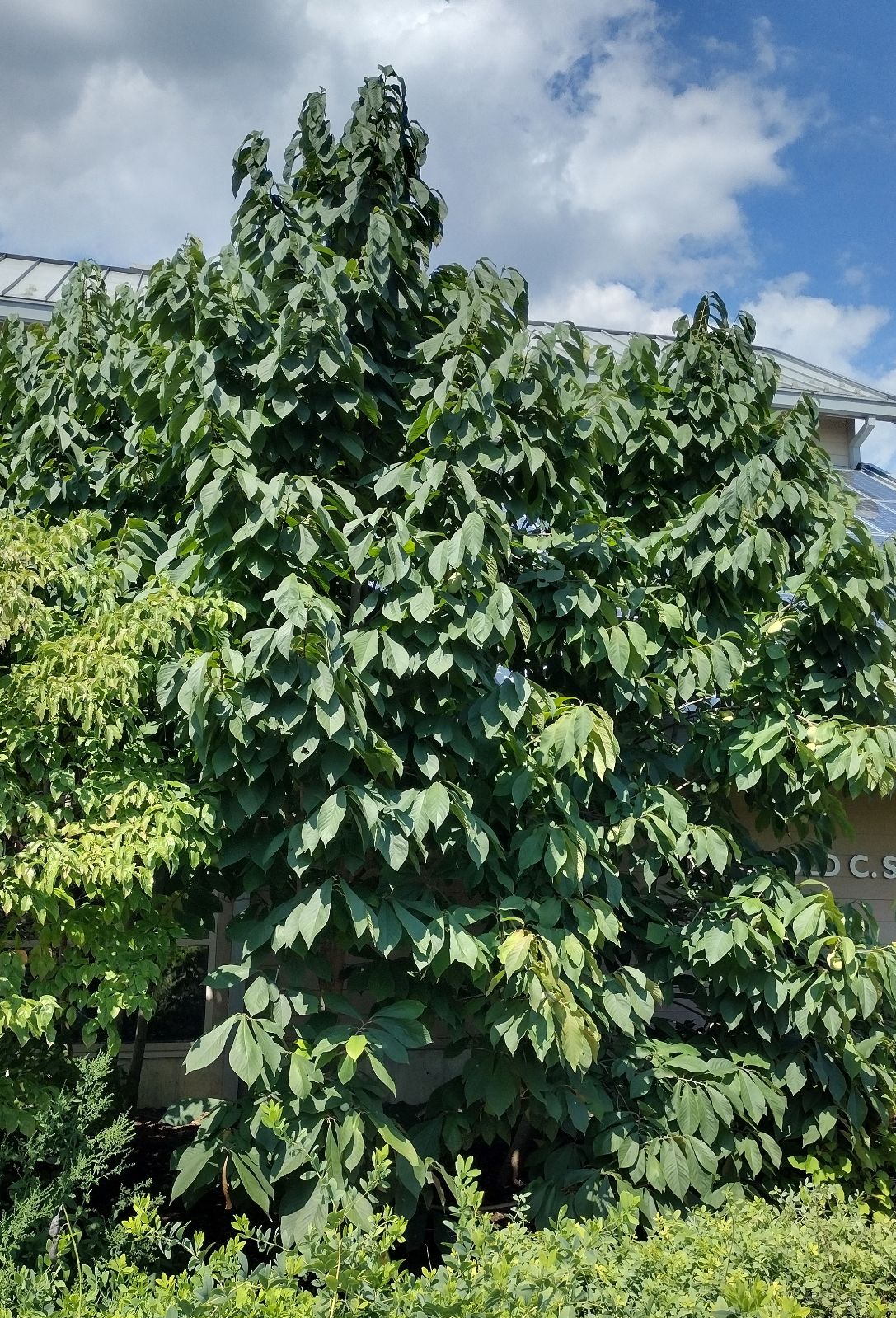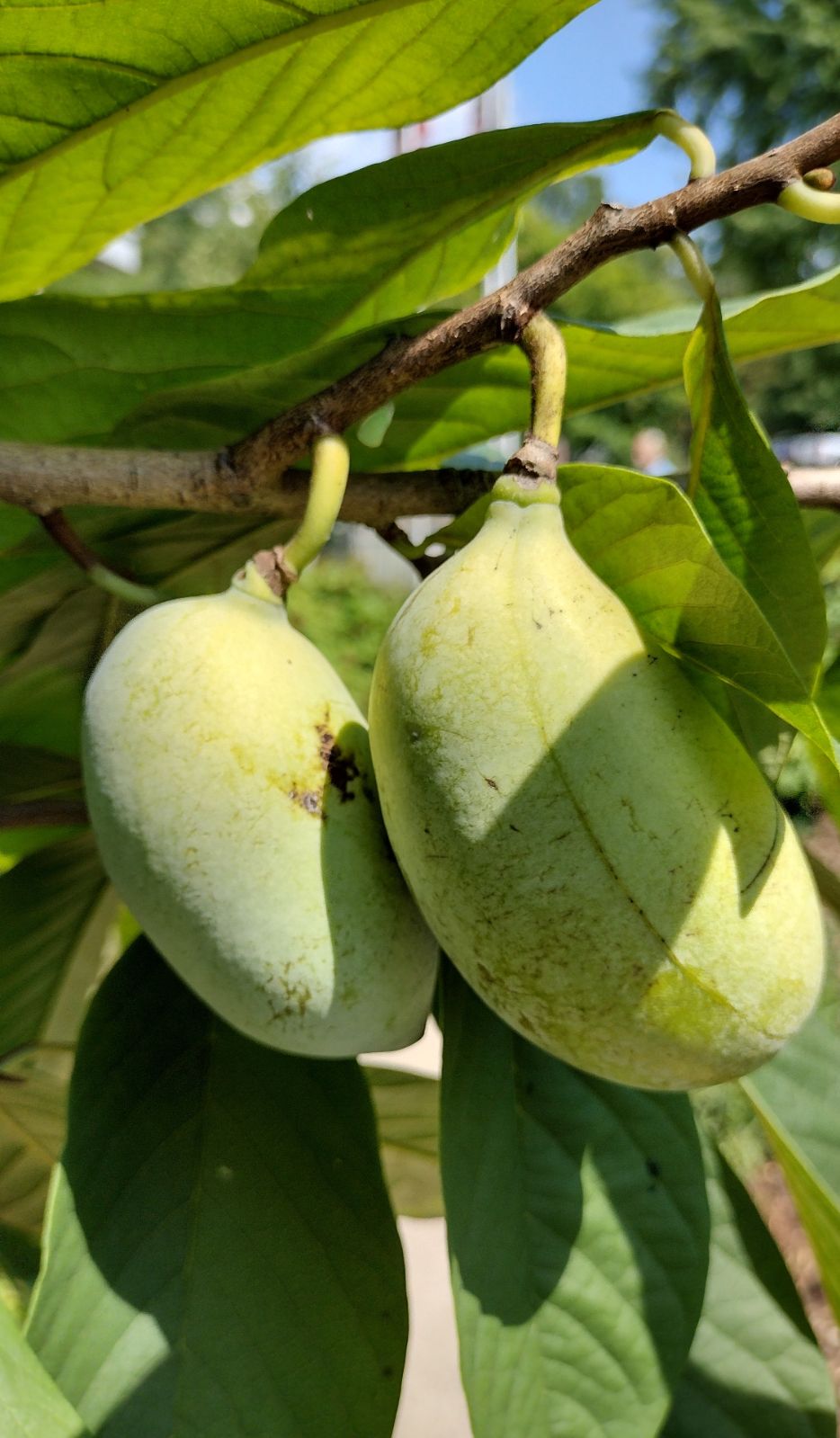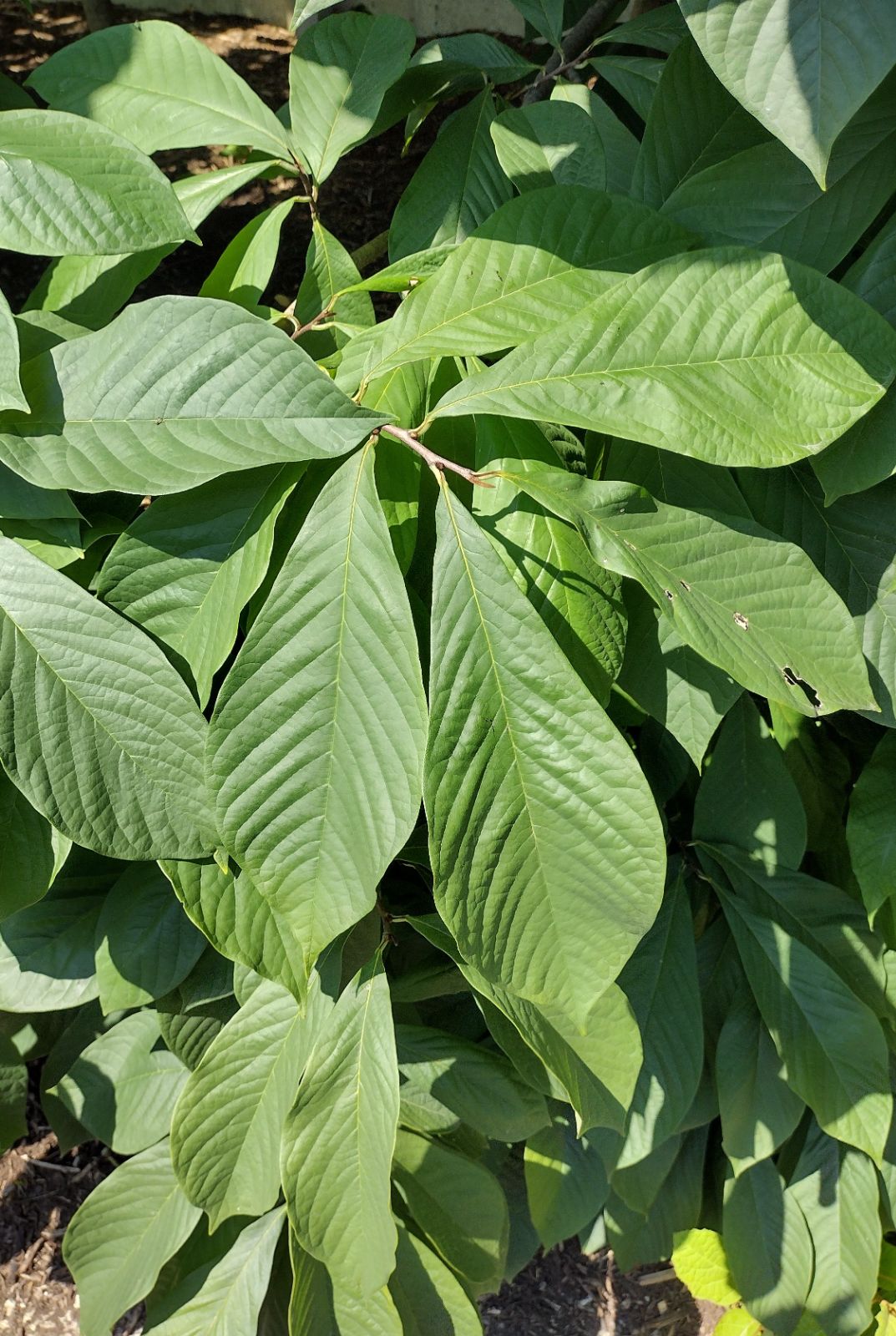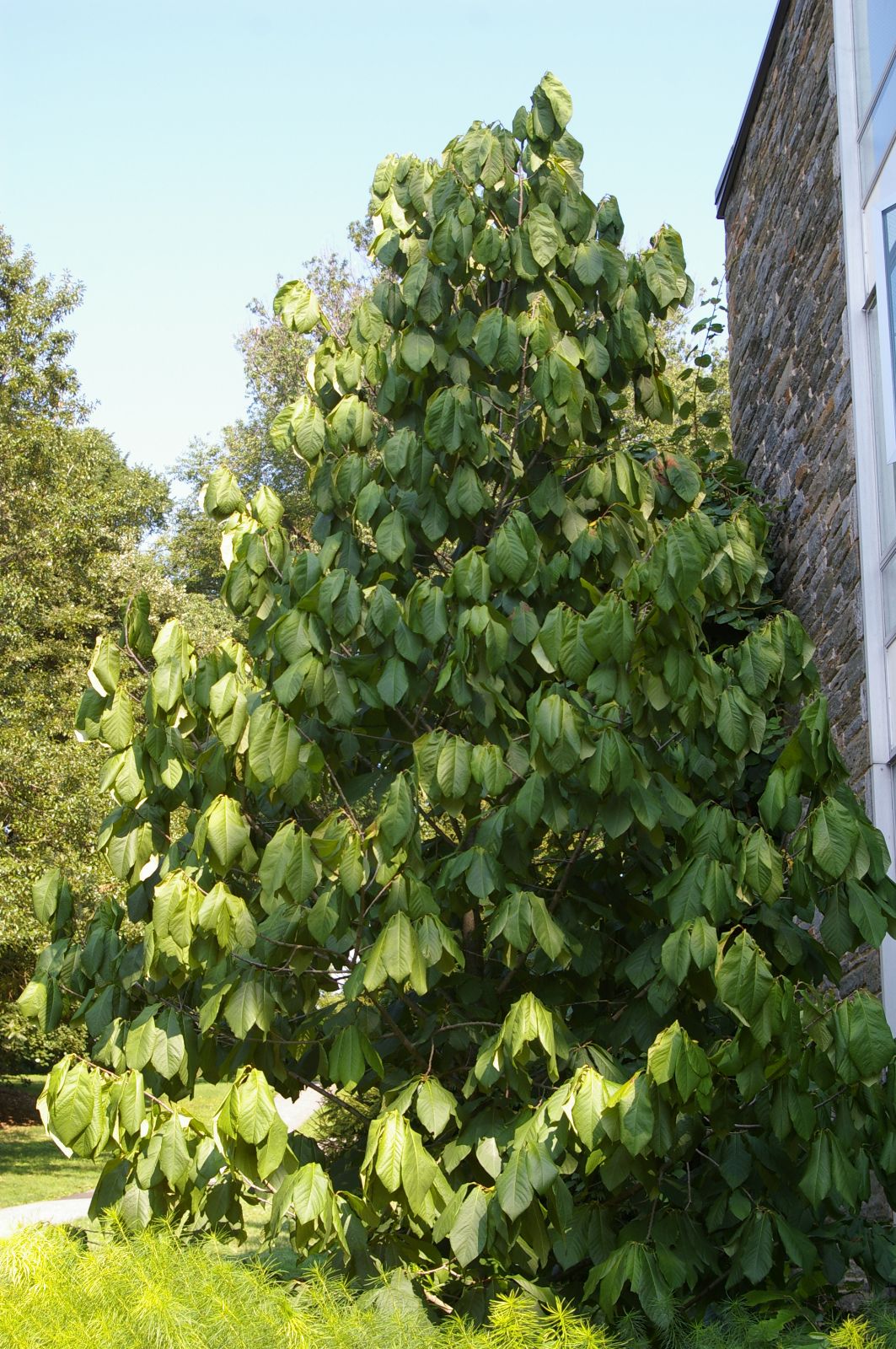Asimina triloba
Credits
Article from Bean's Trees and Shrubs Hardy in the British Isles
Recommended citation
'Asimina triloba' from the website Trees and Shrubs Online (treesandshrubsonline.
Other taxa in genus
A robust, deciduous shrub in this country, but developing into a small tree in the south-eastern United States. Leaves alternate, obovate, pointed, short-stalked, 4 to 8 in. long, glabrous except when quite young. Flowers produced singly on the wood of the previous year, during June. Calyx three-lobed; each lobe 1⁄2 in. long, ovate, downy outside. Petals six, of a dull lurid purple, the outer three much the larger, roundish, 1 in. long; the inner three half as large. Flower-stalk thick, often recurved, 1⁄2 to 3⁄4 in. long, densely downy. Fruit bottle-shaped, 3 to 5 in. long, borne in whorls, containing when ripe a sweet, yellow, edible pulp. Bot. Mag., t. 5854.
Introduced from the south-eastern United States by Peter Collinson in 1736, this interesting shrub has never become common. Its foliage is striking, but the flowers although curious are not ornamental, and the fruit rarely develops in this country. It grows slowly, and one of the finest specimens in this country is, or was, at Claremont, a huge spreading bush 15 ft or so high. It thrives in a good loam, and propagation can be effected by layering; but seeds, procurable from American nurserymen, are preferable. The popular name papaw or pawpaw, although commonly used for this tree in the United States, properly belongs to the quite unrelated Carica papaya, a strange tree with a branchless, soft-wooded stem crowned by a tuft of leaves, under which are borne the delicious yellow-fleshed fruits.

